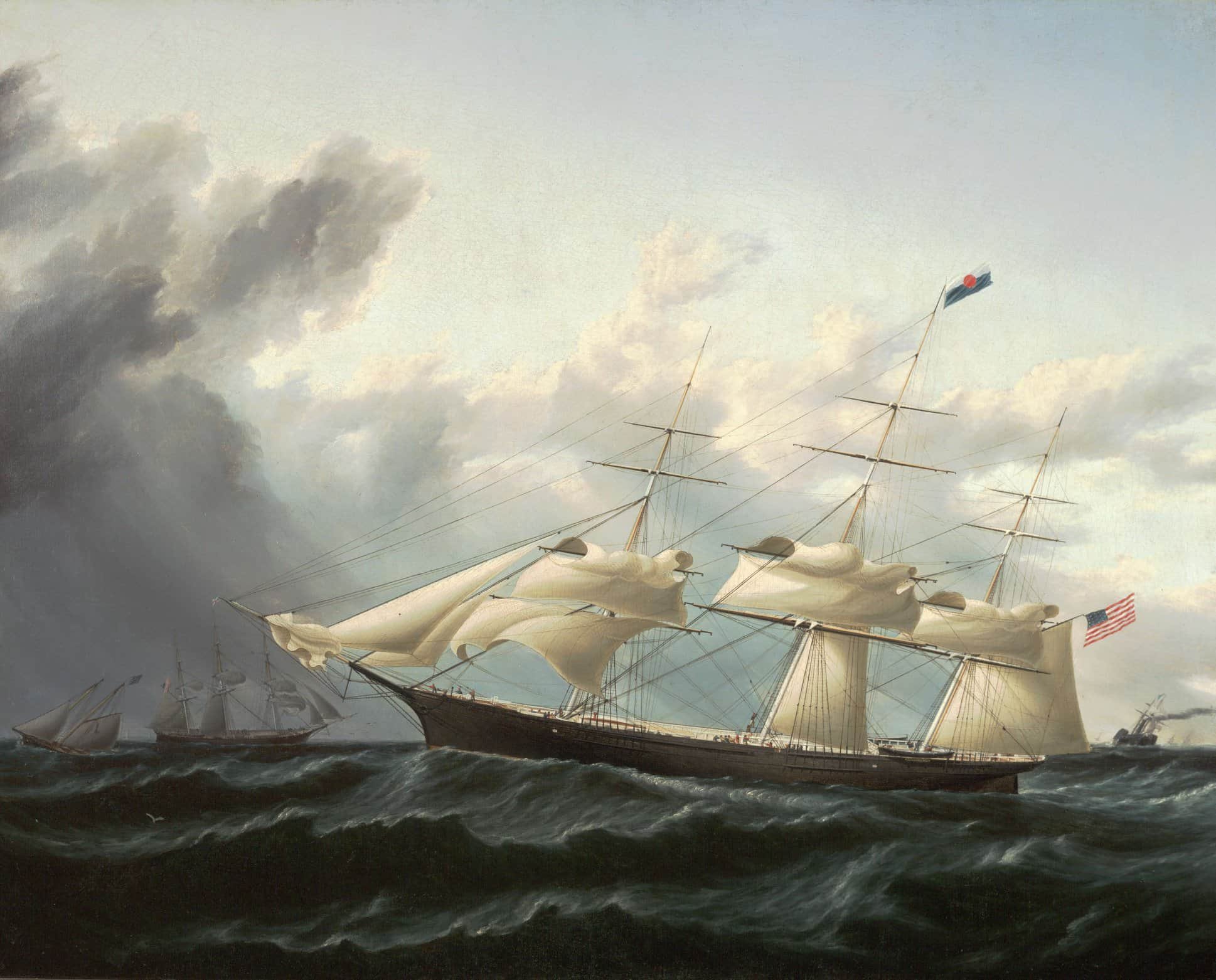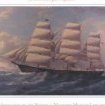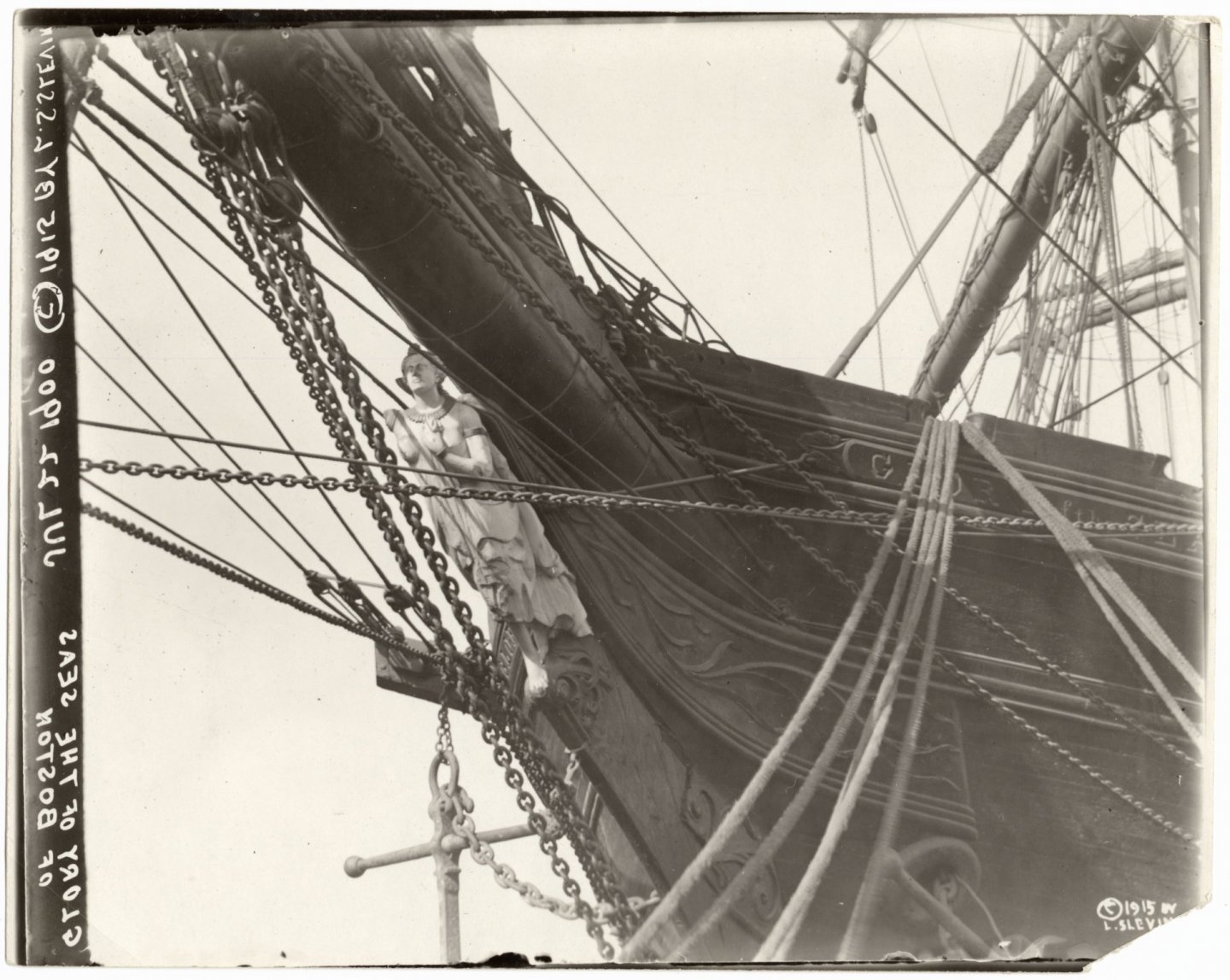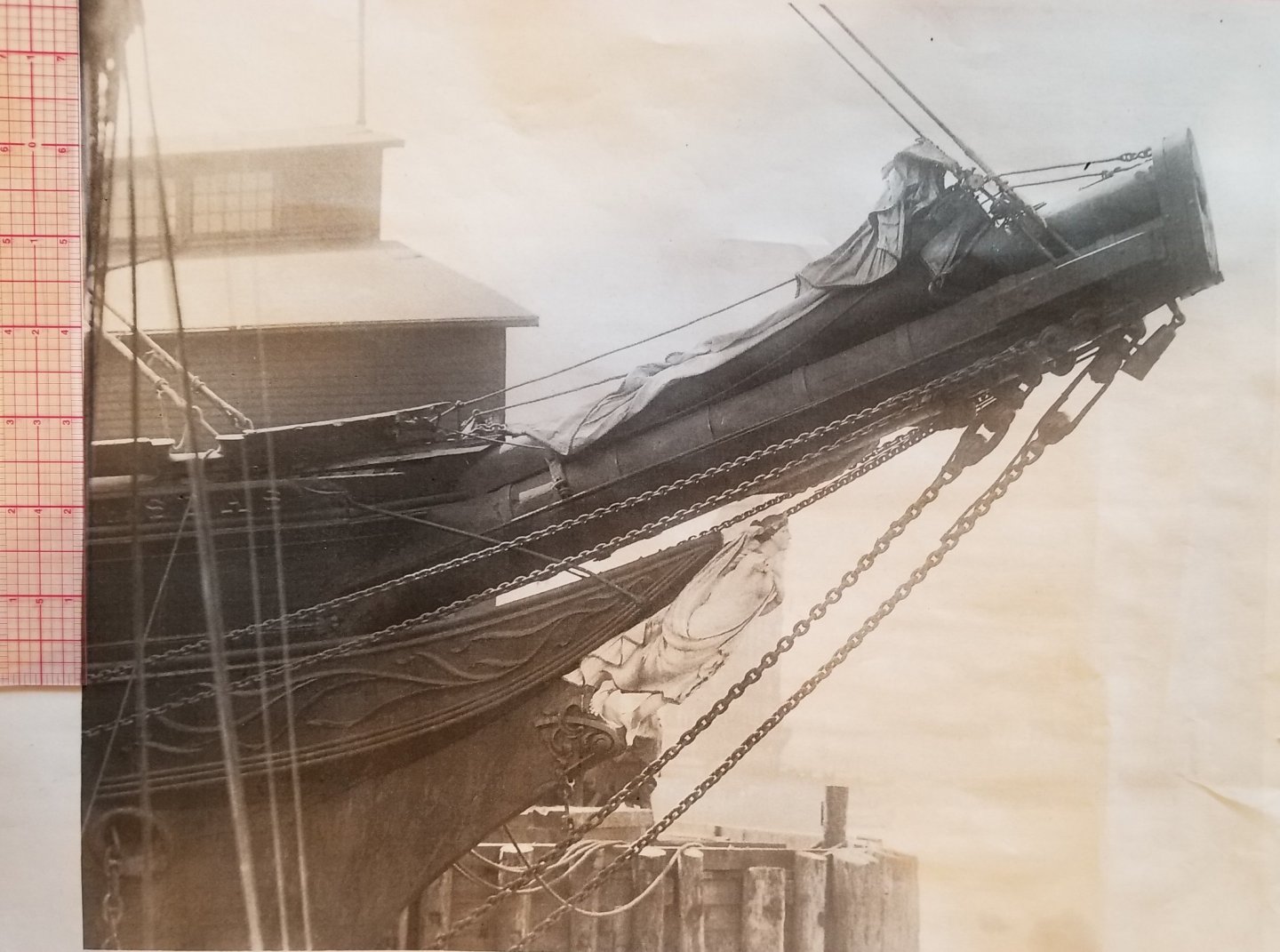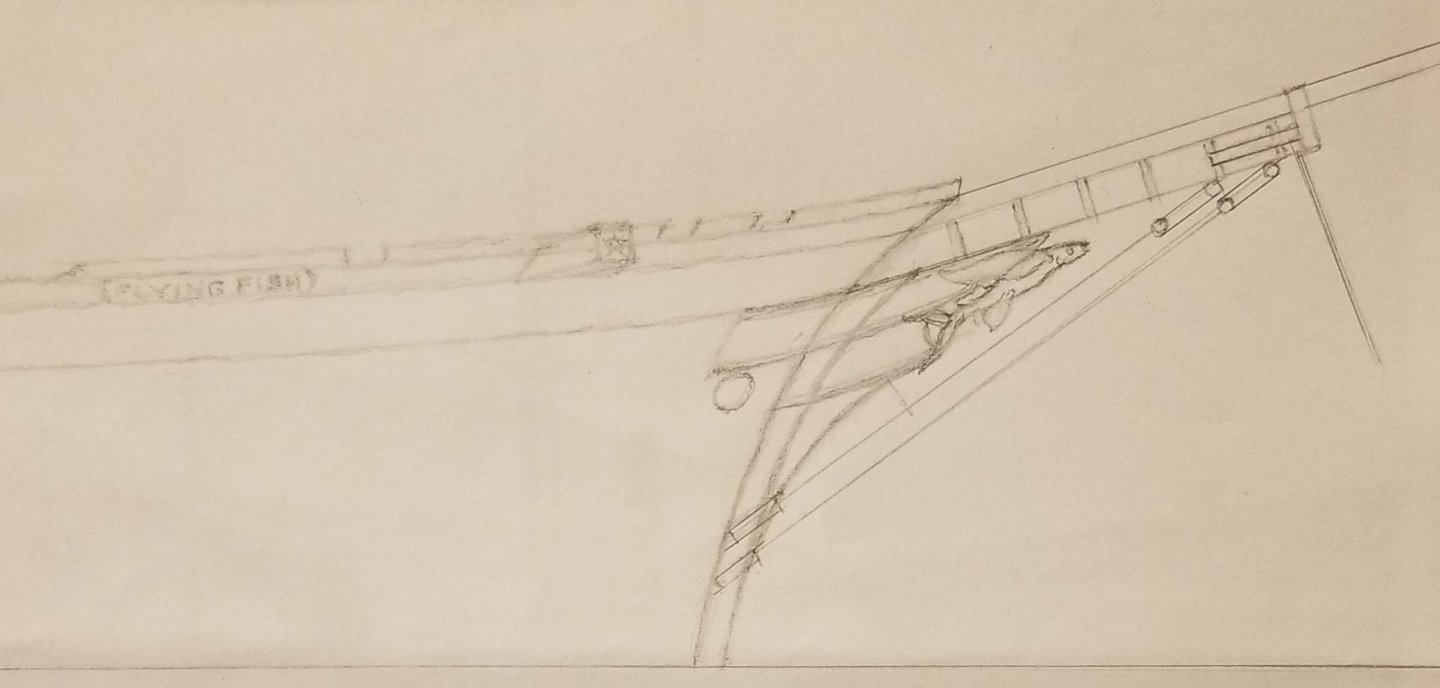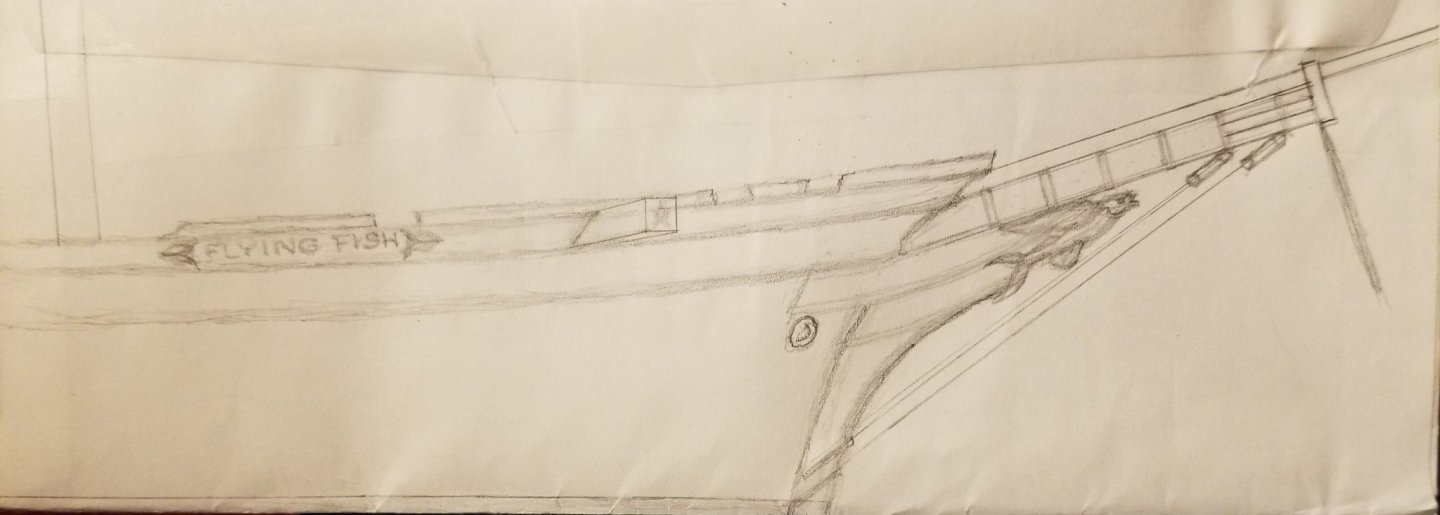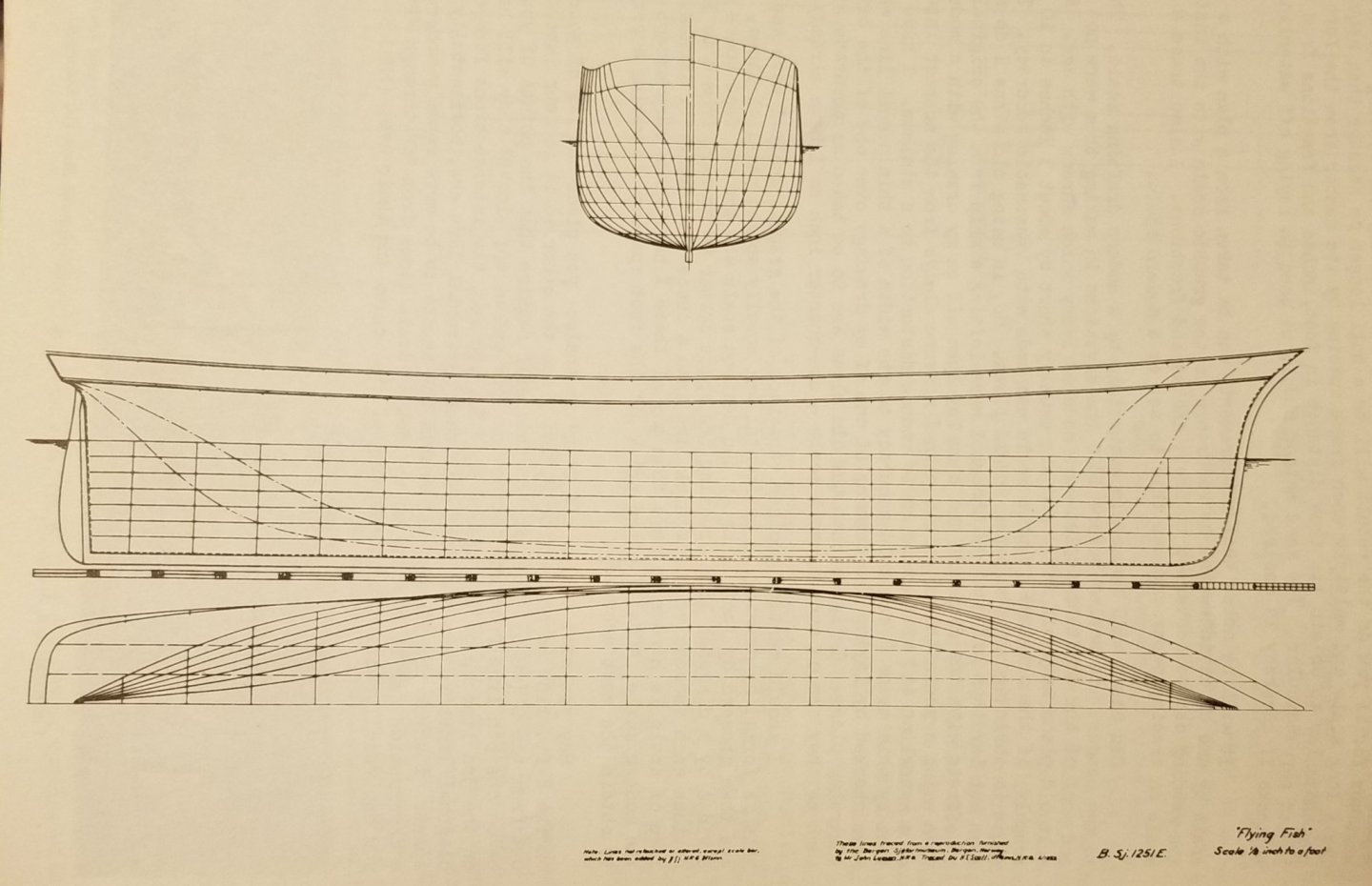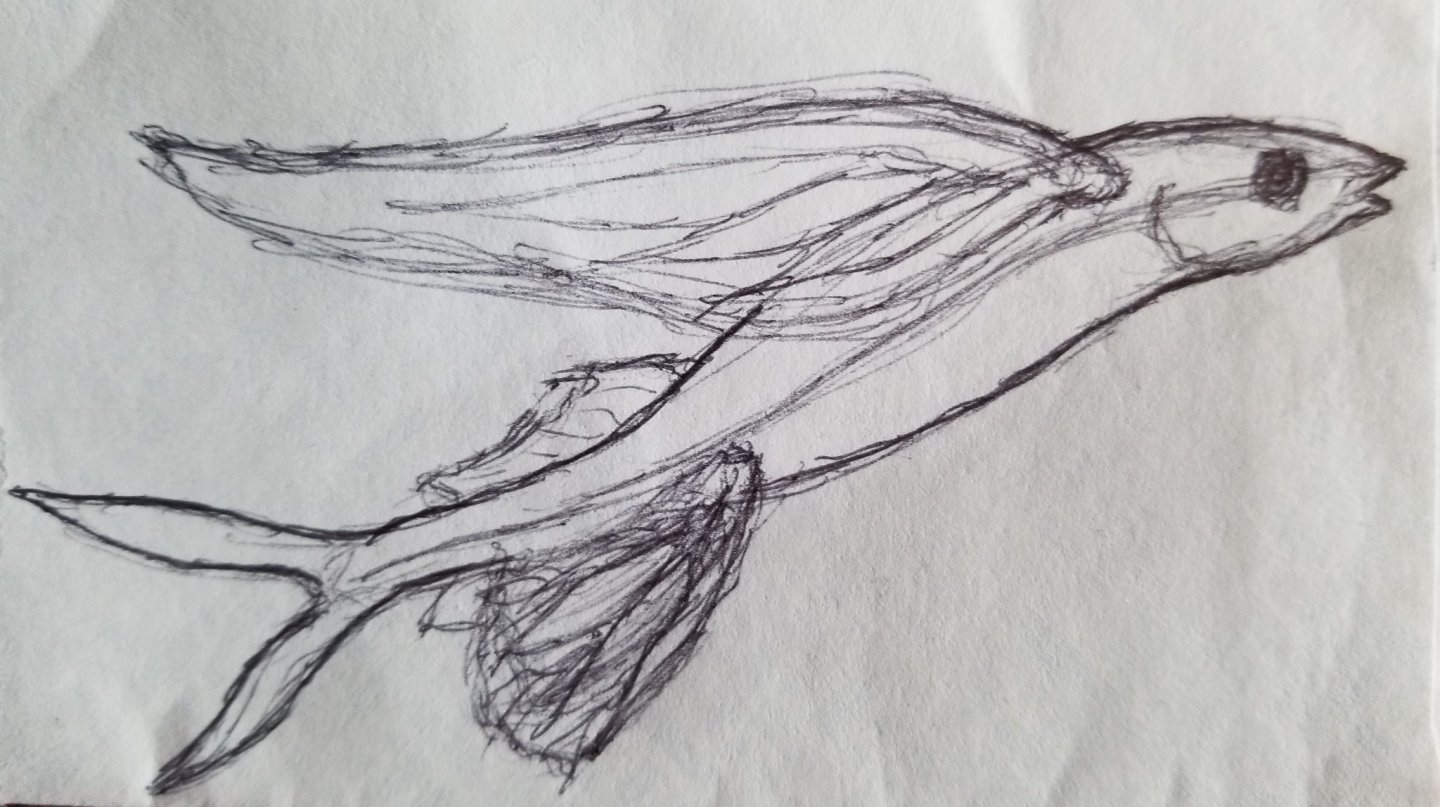-
Posts
2,152 -
Joined
-
Last visited
Content Type
Profiles
Forums
Gallery
Events
Everything posted by ClipperFan
-
Rob, Wikipedia has a pretty thorough chart of the Captains and voyages of "GLORY of the SEAS" including exact dates of departure and arrival locales. Elisha Sears departed Saint John, New Brunswick May 14, 1871 & arrived in Liverpool June 8, 1871 a voyage which took 25 days. In all fairness, her journey should have begun a day earlier but she grounded on a sand bar. From his recommendations to Captain Josiah Knowles to add additional back stays in order to run Glory on full sails implies he was hampered in his own attempts and most likely had to sail under less than optimal setting of sails. On August 19, 1871 Captain Josiah Knowles departed from Cardif, Wales and arrived in San Francisco, December 16, 1871 a voyage of 120 days. February 7, 1872 he left for Liverpool arriving there 112 days later on May 28, 1872. He departed from Liverpool July 25, 1872 where he arrived in San Francisco November 25, 1872 . A journey of 119 days. January 25, 1873 he left San Francisco to arrive in Liverpool 128 days later on May 23, 1873. The next voyage is when Glory had a very fast voyage. She departed New York October 13, 1873 and arrived in San Francisco either on January 16 or 18, 1874 a journey of 94 or 96 days. Which leads me to wonder. After four long voyages, had the captain finally sorted out Glory's rigging, including the added two backstays? This would imply that those backstays might have been added in the later months of 1872, possibly in November? Meanwhile, it leaves plenty of time for Samuel Walters to paint his commission after major modifications to Glory's helm as well as the additional catwalk to the ship's boats remounted on the Boy's house.
- 3,560 replies
-
- clipper
- hull model
-
(and 2 more)
Tagged with:
-
Rob, In response to my question about the added backstays, Mike sent the following email: "Please note that I have concluded that the additional backstays were added following the arrival of "Glory" at Liverpool when Josiah Knowles took command. It was most likely following the earlier suggestion of Elisha Sears who conducted the 'delivery' voyage via St John with lumber from Boston to Liverpool and that Sears had concluded that she needed those two additional backstays if she was going to be 'driven' under full sail." This brings up an interesting thought. Samuel Walters was a contemporary English artist of fine repute. Perhaps this was when he was commissioned to do his beautiful oil? He would have been able to see Glory close up while she was anchored in Liverpool.
- 3,560 replies
-
- clipper
- hull model
-
(and 2 more)
Tagged with:
-
Rob, high praise indeed! I am honored. My apologies too for the sometimes "gadfly" approach I took in the pursuit of meticulous accuracy. Without doubt, we can all be proud of the results we have attained. This has been quite an amazing journey in our mutual attempts to be true to McKay's final masterpiece. Vlad's brilliant computer and bulkhead work certainly helped in accellerating your projects.
- 3,560 replies
-
- clipper
- hull model
-
(and 2 more)
Tagged with:
-
Rob, I have a feeling that Mike will be blown away with this series, as am I. This is total vindication of the many, many months long (well actually over a year) painstakingly accurate research we all did to develop the most accurate "GLORY of the SEAS" plans to date. As impressive as she is in images, she must make an even bigger impact in person. I'm so anticipating her loft masts and massive yard arms being rigged.
- 3,560 replies
-
- clipper
- hull model
-
(and 2 more)
Tagged with:
-
George, it will be so nice when we can all get beyond this pandemic and see a return to normalcy.
- 602 replies
-
- Flying Fish
- Model Shipways
-
(and 2 more)
Tagged with:
-
George, that is simply a wonderful model of the War of 1812 Lake Erie Brig "Niagara!" Beautifully done.
- 602 replies
-
- Flying Fish
- Model Shipways
-
(and 2 more)
Tagged with:
-
Rob, if only someone had painstakingly documented all of these revisions to Glory's appearance and had the forethought to write it all down in some sort of manuscript that could be easily researched.... 🙂
- 3,560 replies
-
- clipper
- hull model
-
(and 2 more)
Tagged with:
-
https://www.homedepot.com/p/Dremel-High-Performance-Metal-Cutting-Wheel-EZ506HP/313352331?source=shoppingads&locale=en-US&&mtc=Shopping-VF-F_D25T-G-D25T-025_009_PORT_POWER-DREMEL-NA-NA-SMART-2231655-WF-SMARTSHOPPING_Q1Q2PLUSUP_PL3&cm_mmc=Shopping-VF-F_D25T-G-D25T-025_009_PORT_POWER-DREMEL-NA-NA-SMART-2231655-WF-SMARTSHOPPING_Q1Q2PLUSUP_PL3-71700000083187718-58700007049582703-92700063451361494&gclid=CjwKCAiA7dKMBhBCEiwAO_crFJOcGmq5QrJCkdT4Ga3pT-idJmnBybN3I7gZvONZwgjXZ0Teseul3xoCB04QAvD_BwE&gclsrc=aw.ds#overlay George I believe the nautical term you're looking for, as used by sailors to access their quarters below is companion. As for your concern about the gap between your model's keel and the beautiful brass pedastals, Dremel makes an accessory to cut brass. I've included a link that describes this cut off wheel in great detail. Nice work on the companion and half moon water closet. While apparently silly, it would also have a logical use. It sure would be awkward to think you're entering a ladder to the lower level only to discover you chose the wrong door!
- 602 replies
-
- Flying Fish
- Model Shipways
-
(and 2 more)
Tagged with:
-
Rob, I tried to find the date Samuel Walters completed his beautiful oil without success. The one conclusion I would leave open is the gaff spar missing on the mainmast. That's because the huge flapping main course being retracted can easily hide it. It's also likely that old wooden stock anchors can be replaced by more modern ones and back and forth based on availability at certain locales. I can tell from the early model red funneled Steamer to the stern of Glory that this is right around the conversion from sail to steam, as the vessel still sports two full sets of auxiliary square sailed masts. Since you correctly identified no installed extra backstays, we know the painting had to be done before that. We also know Glory is depicted with her extended wheelhouse, walkway to the boy's house and upper mizzenmast gaff. My educated guess is that this glorious piece of art was quite likely commissioned by the current Captain (Josiah Knowles, perhaps?) immediately after the inspired extension of Glory's wheelhouse. It would make sense, since very often Ship's Captains wanted a large oil to commemorate the vessel they were in charge of to grace their personal dwellings.
- 3,560 replies
-
- clipper
- hull model
-
(and 2 more)
Tagged with:
-
Rob, Besides "Dreadnought" another McKay designed Massachusetts Clipper Packet built in Newburyport, one of my other favorites is "Galatea" which had a bronze painted hull and an enormous thoroughbred racehorse painted on her topsail.
- 3,560 replies
-
- clipper
- hull model
-
(and 2 more)
Tagged with:
-
Rob, in the various descriptions you read of Ship captains intentionally painting their iron bands bright red, do you think it might have been to enhance visibility at sea, possibly in fog or low visibility weather conditions? I rather like the more subdued red, which is probably more like the shade bright red would turn to after many months at sea...
- 3,560 replies
-
- clipper
- hull model
-
(and 2 more)
Tagged with:
-
- 602 replies
-
- Flying Fish
- Model Shipways
-
(and 2 more)
Tagged with:
-
George, sometimes these calculations can get real "wonky". I really doubt these nautical elements were down to 1/2"s, I'm just trying to keep the ratio as close as realistically possible. To answer your concern about possible gaps in the prow construction, I can assure you that there aren't any. While the Naval Hoods look imposing, they're actually almost an extension of the ship's Hull and they follow the contours precisely. Meanwhile the Cutwater is sandwiched between both Naval Hoods and attaches to the Stem as an extension. You can see that while the ornamental components have almost all washed away, the component itself is completely intact. Rob said he used very thin metal to fabricate the Naval Hoods on his Glory model. I'm sure he'll be glad to give you more details on his process.
- 602 replies
-
- Flying Fish
- Model Shipways
-
(and 2 more)
Tagged with:
-
George, the Cutwater attaches to the Stem and definitely extends the prow outwards considerably. The Naval Hoods mount directly to the Bow of the Hull and taper to a point a little further out and terminate just above the Cutwater. In the case of Glory, as seen from a 1900s view of her figurehead and Bow, both devices end just about the rear edge of Bowsprit iron band #3. There's actually a 4th band #2 but it ties both the inner Jibboom and Bowsprit together. Distance from the Hull to band #1 is 18", then each band is 3' apart, which makes the Naval Hoods about 7 & 1/2' outwards. Since "Flying Fish" has an 18' inboard Bowsprit vs Glory's 24' one, to keep proportions similar I divided 7 & 1/2' by 24' to get a ratio of .3125 (just under a third of the Bowsprit length, as can be seen in the Broadside of Glory's Bow close up, courtesy of Michael Mjelde). Multiplying that ratio times 18' results in 5.625 or 5' 7 & 1/2". That would put the Fish's Naval Hoods just 10" beyond 3" wide iron band #2 (18" to band #1, then 3' between bands #1 and #2 for a total of 4 & 1/2' then 13" beyond to get 5' 7 & 1/2".
- 602 replies
-
- Flying Fish
- Model Shipways
-
(and 2 more)
Tagged with:
-
Rob, fire engine red is too bright and actually detracts from the overall look of your impressive miniature. If you look at the Walters oil, if anything, the iron bands look like they might be painted vermilion, a much darker maroon red. Maybe tone it down with a bit of burnt sienna too and see how that looks. If anything, it should be much more realistic. Other than toylike red, those masts look really beautiful and impressively authentic, although a coat of darkening lacquer varnish would also help enhance the beauty of the wood.
- 3,560 replies
-
- clipper
- hull model
-
(and 2 more)
Tagged with:
-
George, Here's a quick sketch of how McKay's Clipper "Flying Fish" would most likely have appeared with her naval hoods and cutwaters installed and more realistic carved lifelike flying fish figurehead. You can easily see how more ornate and elegant this prow looks in comparison to the sort of pathetic bare stem with tacked on figurehead of the kit. As I mentioned earlier, Boston Daily Atlas publicist Duncan MacLean commented how this rugged arrangement would be able to endure the most damaging waves of the toughest seas and remain mainly intact.
- 602 replies
-
- Flying Fish
- Model Shipways
-
(and 2 more)
Tagged with:
-
George, I found this tracing of McKay's original "Flying Fish" plan from a Museum in Norway. I've also included a sketch idea for more realistic flying fish figurehead. If you look at the images of "GLORY of the SEAS" you'll see that in addition to the stem in the illustration (typically all that's included in these ship's plans) there's a cutwater with naval hoods overlapping just above. The figurehead usually mounts to the tip of the cutwater just below the naval hoods, which are substantial devices incorporated into McKay Clipper Ship Bows. This structure, which McKay jealously guarded was most likely reinforcements to endure tough battery of Cape Horn seas, some of the mightiest on the planet. Unfortunately neither cutwaters nor naval hoods are incorporated in any McKay models: "Flying Cloud", "Sovereign of the Seas" and "Flying Fish" none include these fascinating nautical components in their model kits. I will do an illustration of how "Flying Fish" would have most likely appeared with a complete bow. Since she wasn't much different in construction than "Flying Cloud" it's very likely her prow was quite similar. You can decide what, if anything you want to use of this information.
- 602 replies
-
- Flying Fish
- Model Shipways
-
(and 2 more)
Tagged with:
-
Rob, I'm looking forward to seeing the results of your replicated composite masts. The latest process you describe, while labor intensive sounds like it will yield spectacular results. I'm making popcorn for the occasion! 😉
- 3,560 replies
-
- clipper
- hull model
-
(and 2 more)
Tagged with:
-
Rob, like the Biblical Israelites wandering in the wilderness, we took a meandering path but finally reached a form of enlightenment...
- 3,560 replies
-
- clipper
- hull model
-
(and 2 more)
Tagged with:
-
Rob, I just saw this question now. Only the composite lower sections of the 3 masts are affected. Since the Mizzenmast is already 3' higher, I'm recommending reducing that lower mast by 3' to keep everything consistent. The doubling dimensions are all unaffected, as are the rest of all other Mast components: Foremast, deck to top: 49' Mainmast, deck to top: 55' Mizzenmast, deck to top: 44' Doubling dimensions, top to Cap Foremast: 17' Mainmast: 17' Mizzenmast: 14' Total heights: deck to Cap Foremast: 66' Mainmast: 72' Mizzenmast: 58' I hope this clarifies everything.
- 3,560 replies
-
- clipper
- hull model
-
(and 2 more)
Tagged with:
-
Rob, another nagging detail I just remembered. Mizzenmast height, when adding Rear Carriage House height is actually 3' taller. That would then make the Mizzenmast 50' high, being a foot higher than the Foremast. If the calculation for the Mizzenmast height was actually supposed to be from Main deck below the House, that would make it 3' shorter. Simply subtract 3' off 5' to fix this.
- 3,560 replies
-
- clipper
- hull model
-
(and 2 more)
Tagged with:
-
Rob, I appreciate your even being willing to accept my recommendations after my latest incredible journey off the deep end of mathematical extreme calculations. To answer your question. In following the same dimensions of the mast heights from "Clipper Ship Captain" simply add 5' to the existing lower composite dimensions from deck to top: Foremast: 49' Mainmast: 55' Mizzenmast: 47' For complete height, solid top to cap: Foremast: 17' Mainmast: 17' Mizzenmast: 14' Totals combined, deck to cap: Foremast: 66' Mainmast: 72' Mizzenmast: 61' Again, thanks for hanging in there with me. I promise in the future to keep all non essential "numbers crunching" to myself until I'm fully confident it can be presented simply, logically and with minimal confusion.
- 3,560 replies
-
- clipper
- hull model
-
(and 2 more)
Tagged with:
-
Rob, In hindsight, for all concerned, it would have been far better if I had kept all the zany calculations off this board and just presented findings. Back at post #2099 I explained the logic behind a case for a thicker backbone than just 7'. Utilizing the highly detailed example of "Stag Hound" described as having a 9' back bone and summary of a vessel of about the same size as Glory "Sovereign of the Seas" with an 11' back bone, I tallied up her individual components to arrive at 11'10" for the back bone of "GLORY of the SEAS." Notwithstanding my wandering calculations which even I admit were way off, I believe the logic for a thicker than 7' back bone is very sound. Especially when you consider Glory had the flattest floor of any McKay Medium Clipper, it makes sense her back bone would be more substantial. Keep it simple, I still recommend adding height to the lower masts. If odd inches don't make sense, which I agree, than I would add 5' (4'10" is the difference from 7' & 11'10") Foremast 61' + 5' = 66' (-17') = 49' Mainmast 67' + 5' = 72' (-17') = 55' Mizzenmast 56' +5'= 61' (-14') = 47' Finally, look at how thick the back bone is for the twin Packet Ships too.
- 3,560 replies
-
- clipper
- hull model
-
(and 2 more)
Tagged with:
-
Rob, here's the dimensions from deck to truck of all of Glory's lower masts, as taken from "Clipper Ship Captain" Appendix B, page 216. Foremast: deck to top 44', top to cap 17' total height: 61' (vs 76' 9 & 1/2") 15' 9 & 1/2" shorter, which is way too much of a difference Mainmast: deck to top 50', top to cap: 17' total height 67' (vs 79' 9 & 1/2") 12' 9 & 1/2" shorter, still too much Mizzenmast: deck to top 39' (actually 42' add 3' since mast mounts to deck of rear house, top to cap: 14' total height 56' (vs 70' 9 & 1/2") 14' 9 & 1/2" shorter, again ridiculous. Clearly my results are way off by an embarrassing magnitude. 😉 I originally thought these were about 4' higher, not these huge double digit numbers. Part of my miscalculation is not accounting for the 7' sheer. But even that doesn't explain these useless results. Reassesing I took a less complicated approach. Here's what we do know Foremast 91' - 61' = 30' below deck Mainmast 94' - 67' = 27' below deck Mizzenmast 85' - 56' = 29' below deck Knowing the entire deck height at the Mainmast is 33 & 1/2" we can subtract 27' for a result of 6' & 1/2". Meaning Michael Mjelde has estimated Glory's "back bone" to be 6' & 1/2" (which is about half the size of most of McKay's other large vessels. "Sovereign of the Seas" is documented as having an 11 foot back bone!) Actually if you look at his crossection of Appendix B page 213, he appears to show a 7' "back bone". To really simplify this, I think it would merely take this figure off of 9'5" to get a much smaller result of 2'5". That makes much more sense. This results in the following figures: Foremast: 63' 5" Mainmast: 69' 5" Mizzenmast: 58' 5" All this for a measly 2'5"..... Still I think the reasoning is sound while it may seem hard to follow. I'm going to go hide in a corner now.....
- 3,560 replies
-
- clipper
- hull model
-
(and 2 more)
Tagged with:
About us
Modelshipworld - Advancing Ship Modeling through Research
SSL Secured
Your security is important for us so this Website is SSL-Secured
NRG Mailing Address
Nautical Research Guild
237 South Lincoln Street
Westmont IL, 60559-1917
Model Ship World ® and the MSW logo are Registered Trademarks, and belong to the Nautical Research Guild (United States Patent and Trademark Office: No. 6,929,264 & No. 6,929,274, registered Dec. 20, 2022)
Helpful Links
About the NRG
If you enjoy building ship models that are historically accurate as well as beautiful, then The Nautical Research Guild (NRG) is just right for you.
The Guild is a non-profit educational organization whose mission is to “Advance Ship Modeling Through Research”. We provide support to our members in their efforts to raise the quality of their model ships.
The Nautical Research Guild has published our world-renowned quarterly magazine, The Nautical Research Journal, since 1955. The pages of the Journal are full of articles by accomplished ship modelers who show you how they create those exquisite details on their models, and by maritime historians who show you the correct details to build. The Journal is available in both print and digital editions. Go to the NRG web site (www.thenrg.org) to download a complimentary digital copy of the Journal. The NRG also publishes plan sets, books and compilations of back issues of the Journal and the former Ships in Scale and Model Ship Builder magazines.

